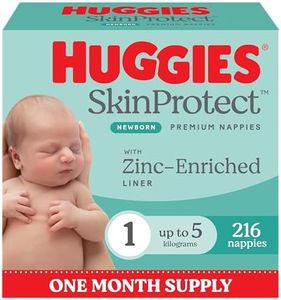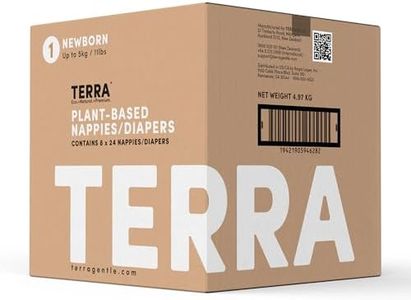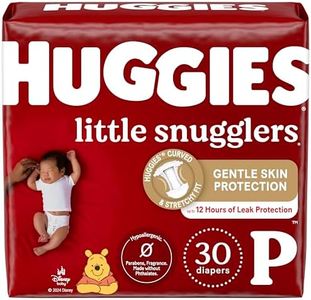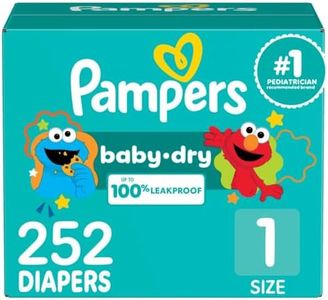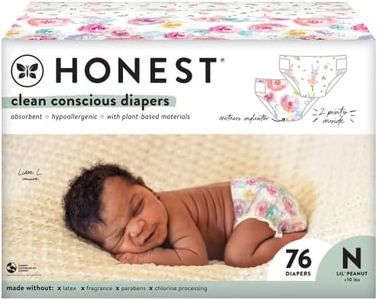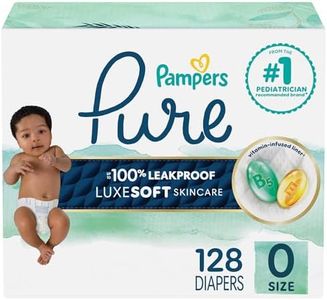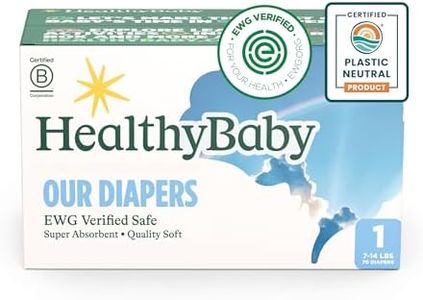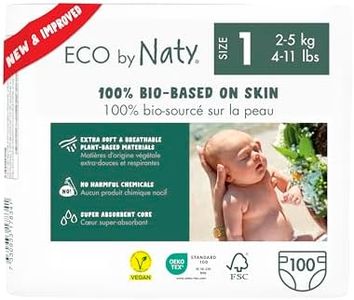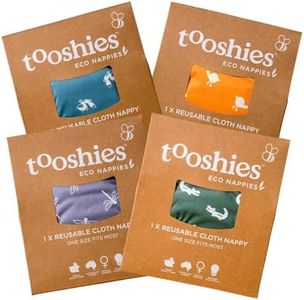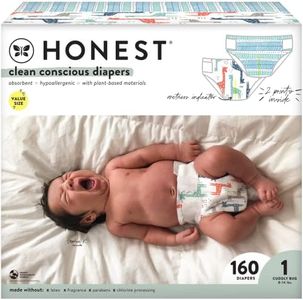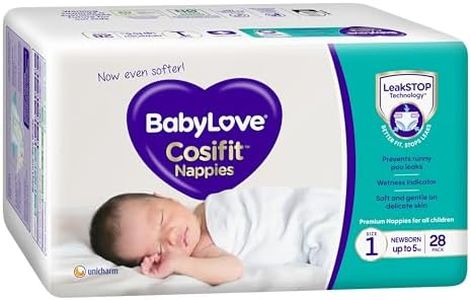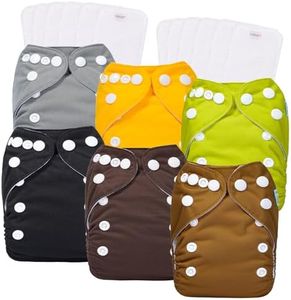We Use CookiesWe use cookies to enhance the security, performance,
functionality and for analytical and promotional activities. By continuing to browse this site you
are agreeing to our privacy policy
10 Best Diapers For Newborns
From leading brands and best sellers available on the web.Buying Guide for the Best Diapers For Newborns
Choosing the right diapers for newborns can feel overwhelming with so many options available, but understanding your baby's needs and what features to look for is the best starting point. The main goal is to ensure your baby stays dry, comfortable, and free from irritation. Every baby is different, and you might need to try a couple of types or brands before finding the perfect fit. Paying attention to key specifications can help you make a more informed and confident choice.Size and FitSize refers to how well the diaper matches your baby's current weight and body shape. A diaper that's too small can cause leaks and discomfort, while one that's too large might not fit snugly and could lead to blowouts. Newborn diapers are typically suitable for babies up to 10 pounds, but every baby grows differently. To pick the best size, check the manufacturer's weight recommendations and watch for signs that the diaper is too tight or too loose. Choosing the right size is crucial for your baby's comfort and for preventing leaks.
AbsorbencyAbsorbency is how much liquid the diaper can hold before it feels wet or starts to leak. Newborns urinate and have frequent and often loose stools, so high absorbency is key to keeping them dry. Diapers often advertise overnight protection or extra-absorbent cores, which are better for longer stretches without changing, like overnight. For daytime or frequent changes, regular absorbency may be sufficient. Look for diapers that lock moisture away from the skin to prevent diaper rash and discomfort.
Wetness IndicatorA wetness indicator is a line or marking on the outside of the diaper that changes color when the diaper is wet. This feature helps parents and caregivers know when it's time to change the diaper without having to open it up or guess. It's particularly useful for new parents and for night-time changes. If you prefer convenience and want to avoid unnecessary changes, a wetness indicator can be a very helpful feature.
Material and Skin SensitivityThe materials used in diapers can impact both comfort and the likelihood of irritation. Some diapers are made with hypoallergenic, fragrance-free, or organic materials, which can be gentler on sensitive newborn skin. Babies who develop rashes or show signs of discomfort may need diapers made without harsh chemicals, lotions, or fragrances. Evaluate your baby's skin reaction and choose diapers made from materials that minimize the risk of irritation if your baby is prone to sensitive skin.
Ease of UseEase of use refers to how simple it is to put on, take off, and secure the diaper. Some diapers have convenient features like flexible tabs, stretchy sides, or a contoured shape that hugs the baby's body. These can make changes quicker and less stressful, especially for first-time parents or late-night changes. Choose diapers that are easy for you to handle and fasten, as this will make diapering your newborn less of a chore.
Leak Guards and Back ProtectionLeak guards are the extra barriers built into the sides and back of a diaper to prevent liquid or stool from escaping. Newborns often have very watery stools, so effective leak guards help keep their clothes and bedding clean. Look for diapers with strong side barriers and a stretchy, high-cut back if your baby tends to have frequent blowouts. Choosing diapers with reliable leak guards can make changing and clean-up much easier.
